
Distimake dissectus
(Noyau vine aka Alamo Vine)
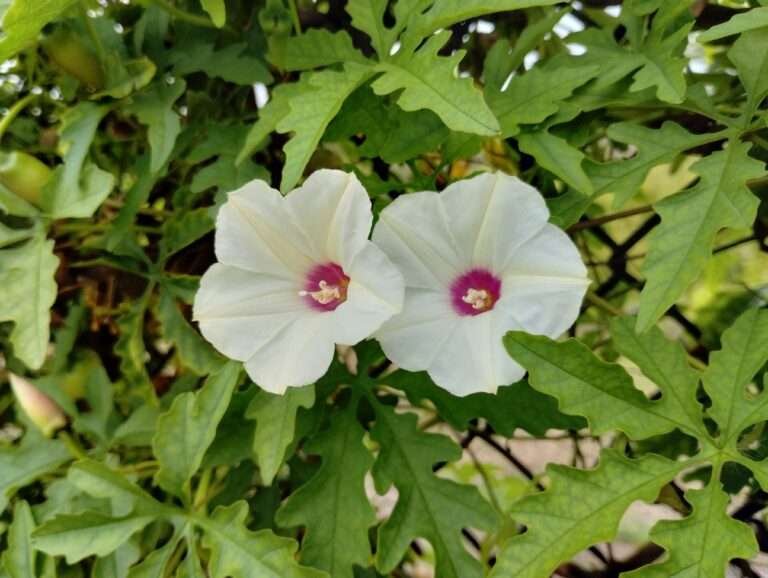
Common Names, Latin Name, and Family
Some other common names for the noyau vine are Alamo vine, cutleaf morning glory, noyau vine, noon flower, wood rose, Correhuela de las Doce, and Hierba de la tarántula.
“Noyau in Caribbean French, but not in France, is a word clearly associated with almond odor and taste, although it specifically refers to kernel, pit, or stone.” [1]
Noyau can be pronounced several ways including no-I-you or noi-u or noi-oh.
Its Latin name is Distimake dissectus.
Synonyms: Merremia dissecta, Convolvulus dissectus, Ipomoea dissecta, Ipomoea sinuata, and Operculina dissecta.
It is found in the Convolvulaceae, or morning glory, family of plants.
Form
It is a perennial vine that grows to a length of 10 to 20 feet.
It does not have tendrils, but twines around nearby supports and may root where it touches the ground.
Leaves
The palmate leaves are alternate and dissected with toothed margins. Each leaf can have seven or more lobes. It is a very distinctive leaf shape.
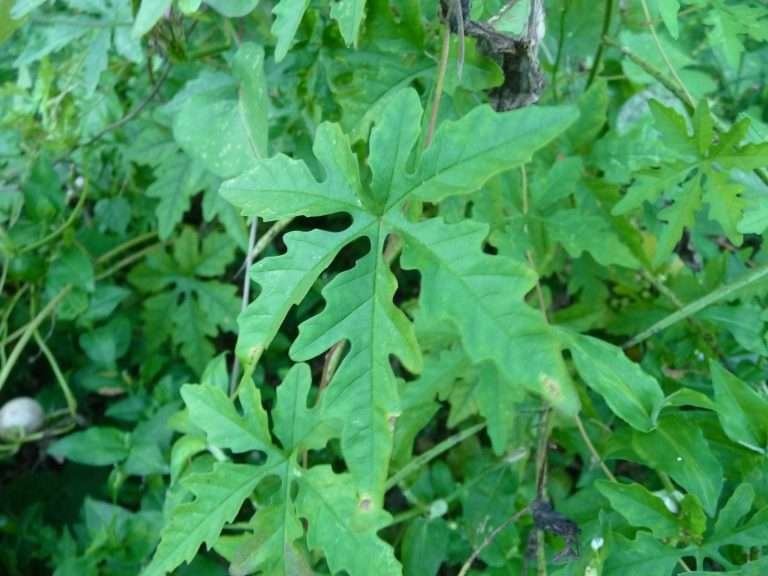
Flowers
The white flowers are large and funnel shaped with rose colored throats. Unlike most morning glories the flowers stay open throughout the day. Flowers appear all year.
Habitat
Noyau vine grows in pinelands, fence rows, and disturbed sites.
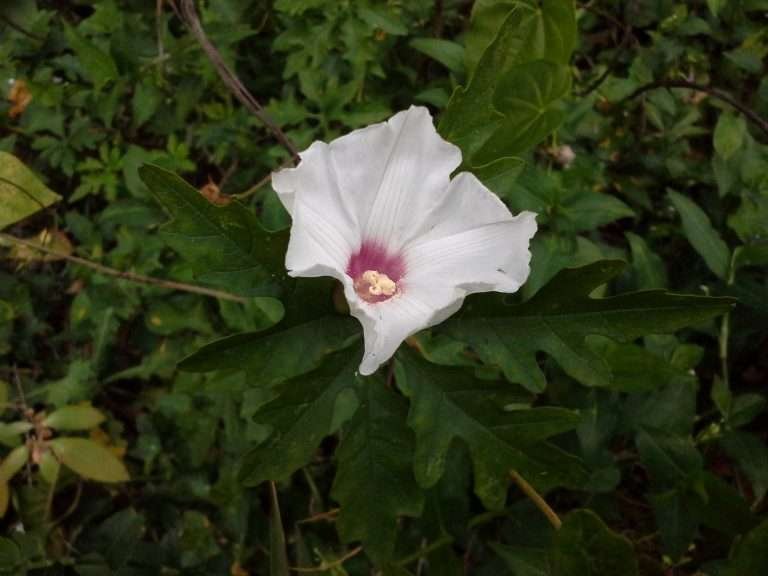
Native Range
Noyau vine is native to the following states: Alabama, Florida, Georgia, Louisiana, and Texas.
It is also found in the Caribbean, Mexico, Central America and South America.
It grows in zones 7b to 11.
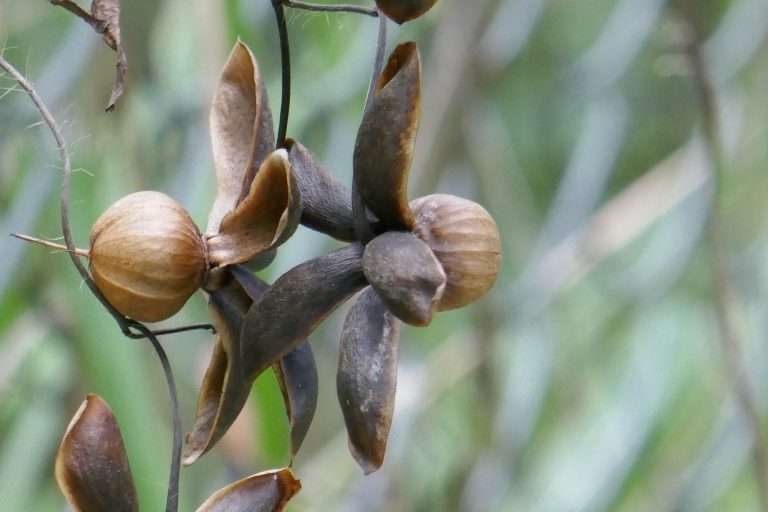
Landscape Use
Noyau vine grows in a variety of conditions. It can be grown in dry to moist soils with full or partial sun. It flowers best when exposed to the most sunlight. It does not tolerate standing water.
Planted alongside any support it will reach for sunlight. It is easily trimmed to keep it within the bounds of your garden, but can be a maintenance nightmare if left to its own devices for too long.
Wildlife Uses
Butterflies and bees use the flowers as a nectar source. It is a favorite of bumblebees.
Reports state that it is poisonous to livestock and supposedly deer resistant. If your pets like to chew on foliage in your garden then this isn’t a good plant for your green space.
Human Uses
The leaves smell like bitter almonds and are used in India for making liquor. In Africa, an infusion of its leaves is taken as a sedative for chest complaints, and a poultice of fresh, crushed leaves is applied as a resolutive. [2]
It also has anti-microbial properties. [3]
The seeds are poisonous if ingested.
Propagation
Can be grown easily from seed, and transplanted when small. Root cuttings can be taken where parts of the vine have touched the ground and started to set out roots.
The seeds have a very hard outside coating and need to be scarified before planting. Scarification and soaking over night in water will help germination.
I sell noyau vine aka Alamo vine seeds here at my Ebay Store.
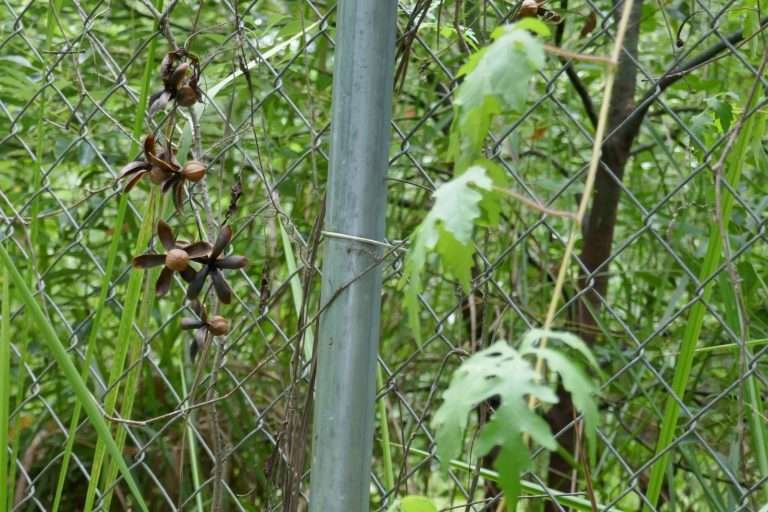
Footnotes:
[1] [2] Daniel F. Austin. Merremia dissecta (Convolvulaceae): Condiment, Medicine, Ornamental, and Weed—A Review. Economic Botany 61(2). 109-120, (1 June 2007).